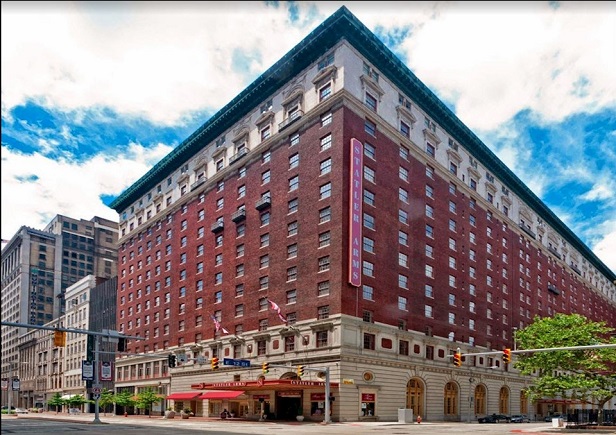
CHICAGO–So far 2018 is proving to be a good year for Marcus & Millichap's IPA Midwest Multifamily team of Michael Barron, Josh Wintermute and Daniel Burkons. Year to date they have closed $251.4 million in multifamily transactions in the region. They have another $176 million under contract, just listed a $230 million portfolio with an additional $121.7 million on the market as well.
This activity is due in part to robust local markets and investors — but also what has been an ongoing story for the Midwest for the last five years or so: interest in the area from apartment investors in New York and Los Angeles and other coastal capitals. The reason is obvious: As pricing grew richer in these cities, investors began looking further afield for yield and opportunities. They came to the Midwest and found the yield they were seeking — and realized at the same time that these markets also offer very solid fundamentals. “You can buy a really strong asset in a good location and get a higher yield here,” Burkons tells GlobeSt.com. “Most of the investors that have come exclusively from the coastal markets who made a good purchase in the Midwest have come back for more.”
These investors run the gamut from high net worth, private clients, family offices to true institutions that are looking to place cash and close on a deal in 15 to 30 days, Barron tells GlobeSt.com. “We have deals in Kansas City, Pittsburgh, Columbus, Cleveland and Detroit right now,” he says.
GlobeSt.com spoke with the team about the market and what the influx of out-of-town investors is having, especially on pricing. Here are some excerpts from that conversation.
What The Yields Are Like
Obviously it depends on the asset class. One of the most targeted asset classes in the Midwest right now is your stereotypical 1990s-2000 value add community that has good bones, good floor plans and a good amenity package. Many investors are looking to acquire those properties with going-in yields somewhere in the lower five cap range. Then, via a value add program, they are able to increase those yields by 100 basis points, or somewhere in the low 6s, or even 200 basis points to somewhere in the low 7s.
Or here's another example: The team has a 319-unit property under contract in the Pittsburgh area, according to Burkons. It is Class A and completed in 2016. “I would say you're in the low 5s in terms of going-in cap. We have 21 offers on that property from all over the country and the spectrum of buyer profile is very wide.”
In Cleveland, the team is marketing a workforce housing apartment circa mid-1960s that is Class C. That is expected to trade in the low to mid 6s.
Statler Arms, a 295-unit value-add property in Downtown Cleveland, recently sold for $40 million. It was a repositioning play, so it was a true value add, Wintermute says.
Who The Buyers Are
Here it should be noted that while coastal buyers have been very active, there is also robust interest from local buyers. Indeed, a local entity scooped up Statler Arms. “The outside capital is really helping to push local investors understand the value of the real estate and the opportunity that exists, and they are stepping in,” Wintermute says. “Sometimes they'll outbid the coastal guys because they understand the fundamentals better.”
But coastal buyers have a noticeable presence in the market, the team says. Especially on the private side, according to Burkons. “They've sold a property, made an enormous gain, have 1031 money but they don't want to buy something else in California or Manhattan for which they are just going to overpay. Instead they want to take their winnings and put it somewhere where they can actually live off the property. We've seen a lot of 1031 money here placing in long, stable holds.”
There is also interest from foreign capital, Wintermute adds. “We've seen a lot of Israeli money, money from Singapore and a lot from Canada.”
Rising Prices
CRE pricing, of course, has been rising nationwide but the team believes that the influx of out-of-town capital has had an effect on local pricing as well. “I would say anecdotally over the last 24 months there has been a rise of 15 to 20%, particularly for the large suburban Class B repositioning asset,” Burkons says.
“When we do BOVs (Broker Opinion of Values) for owners we find that when we have revisited a property after a year or two, rents have gone up 2 or 3 percent and cap rates have dropped 25 to 50 basis points,” Barron says. “That results in a huge spread on value creation in a short period of time.”
How The Cycle Will Play Out
The outlook now for the region is very strong but even when the cycle eventually cools down, say in five years, the team believes that the coastal investors will stay. “Even when yields are a little bit more palatable in their original core markets, they're already here, they have a foothold and they will stay,” Burkons says. “We believe that's going to keep pricing from dropping too dramatically.”
© Touchpoint Markets, All Rights Reserved. Request academic re-use from www.copyright.com. All other uses, submit a request to [email protected]. For more inforrmation visit Asset & Logo Licensing.







